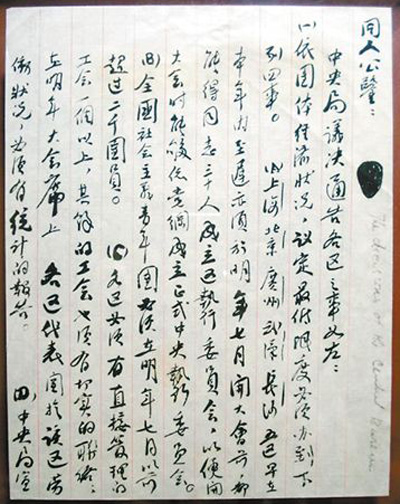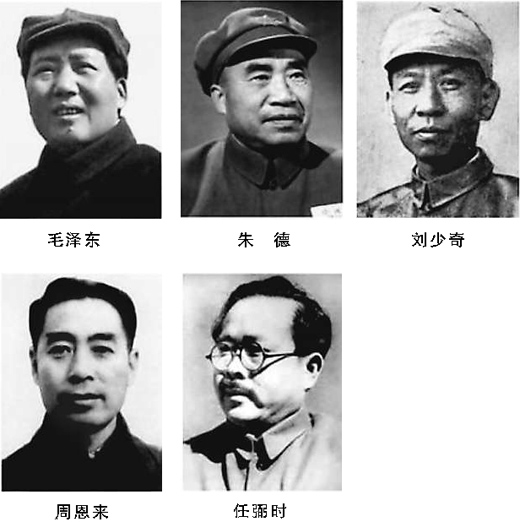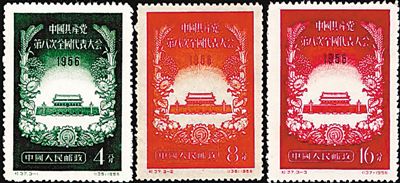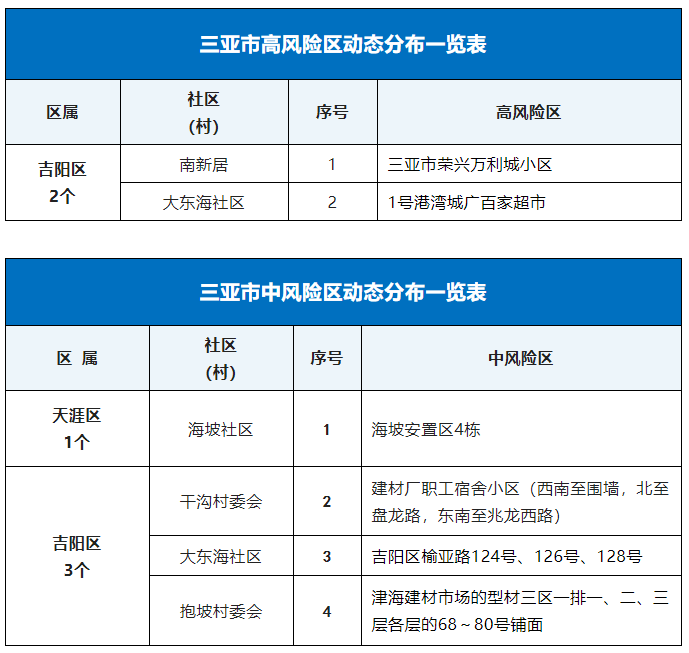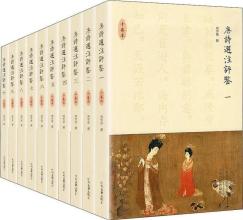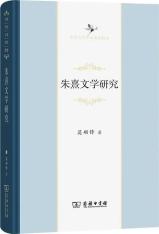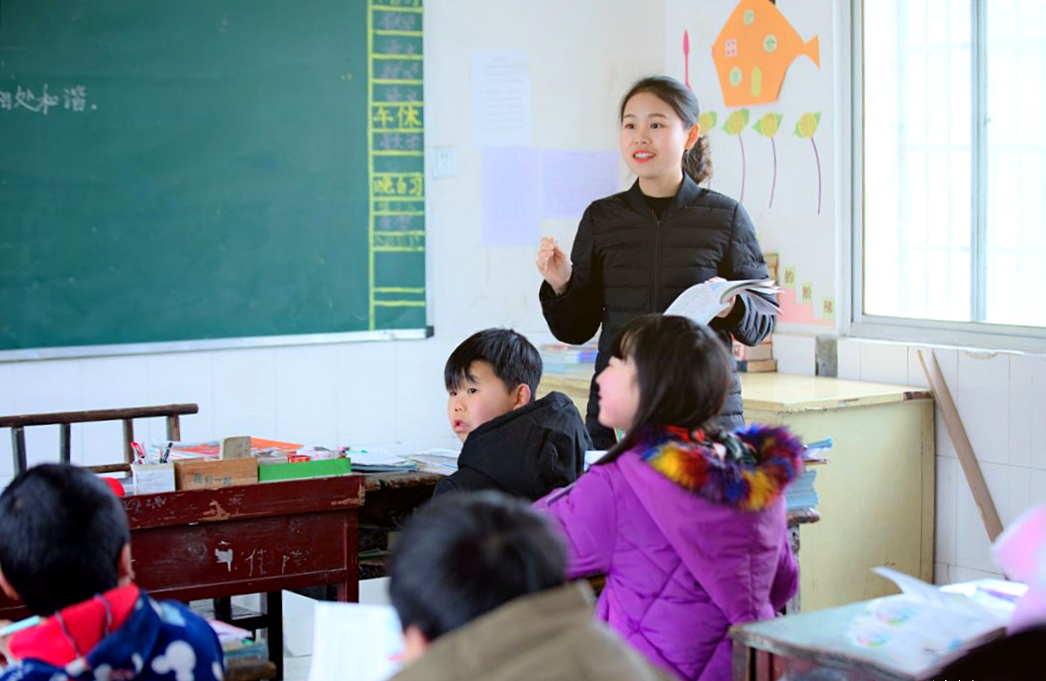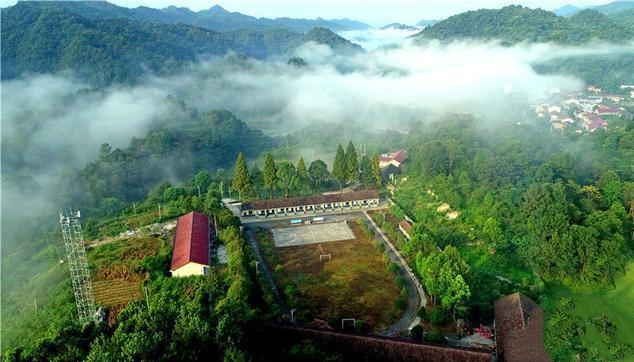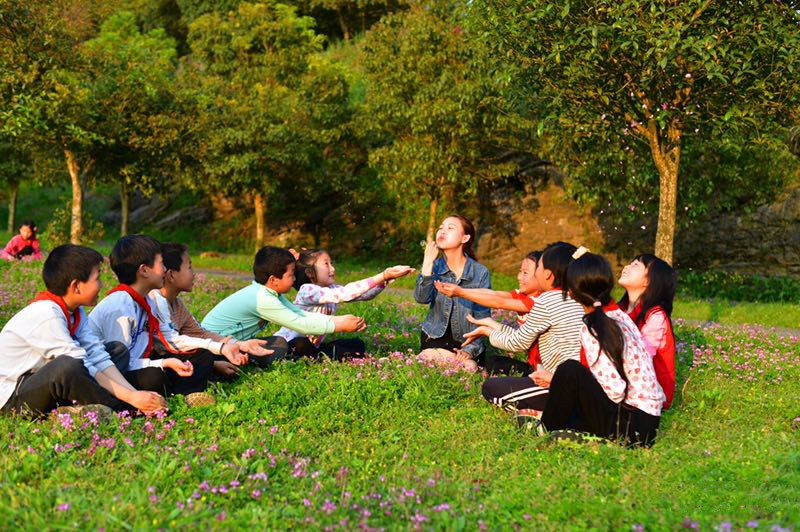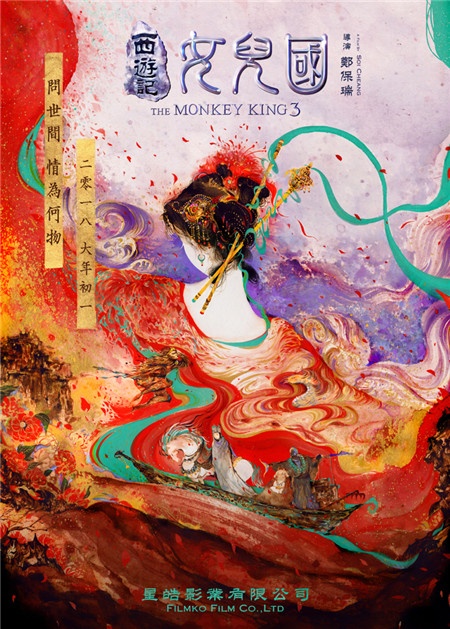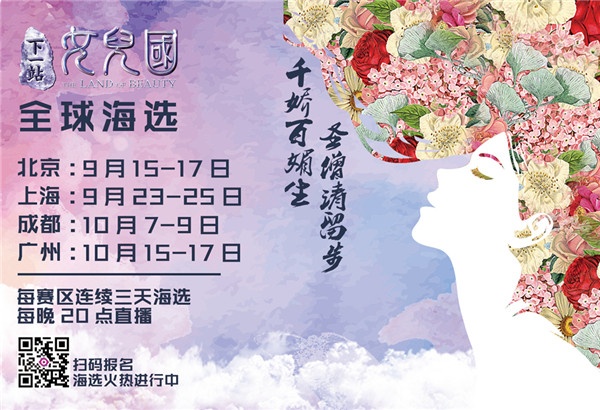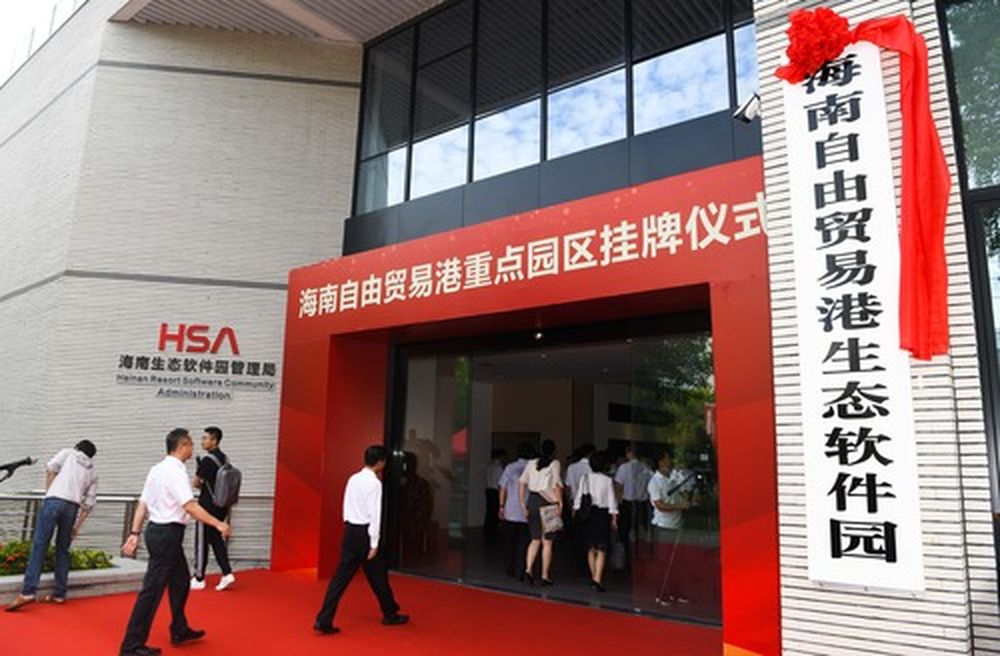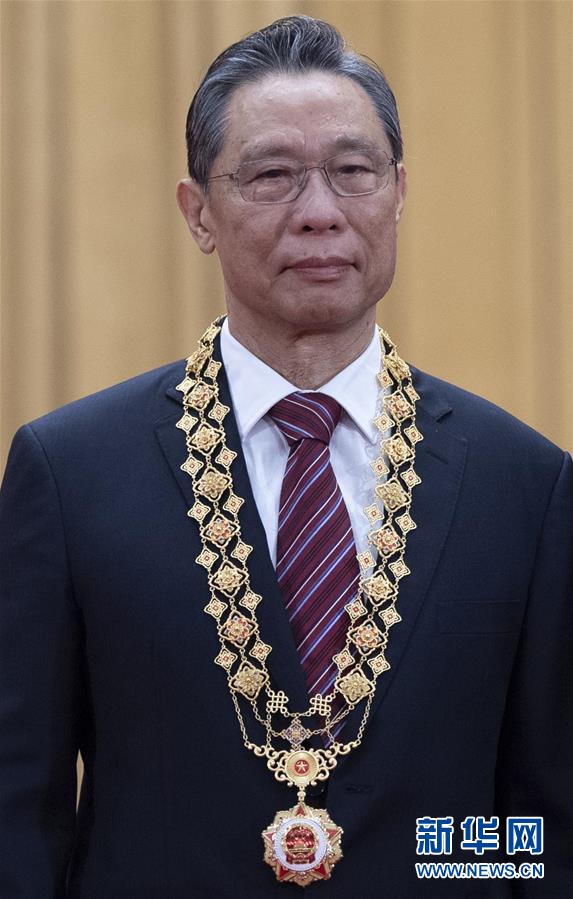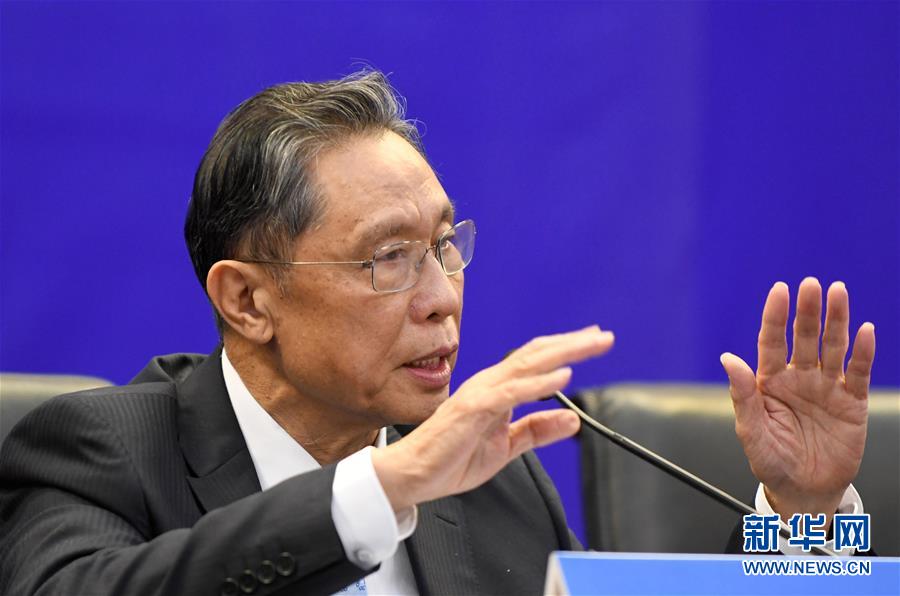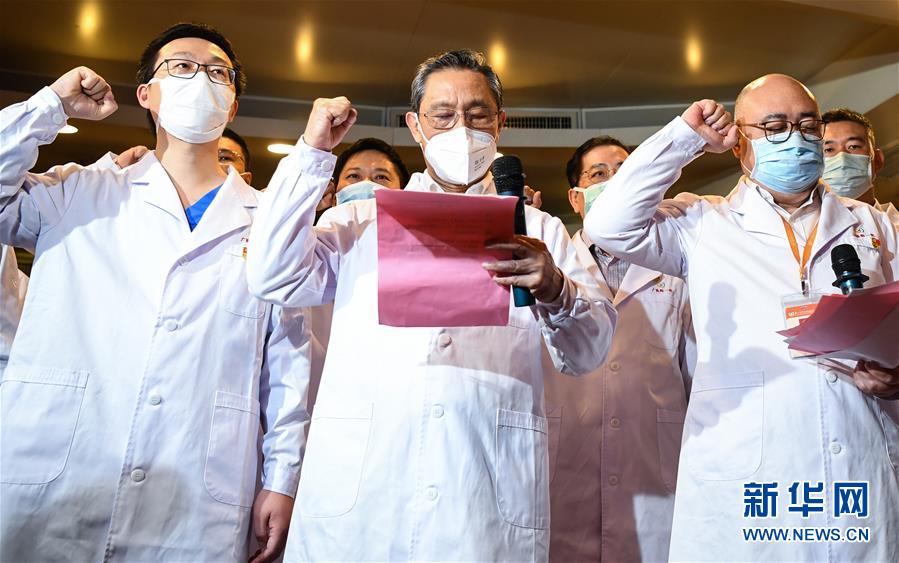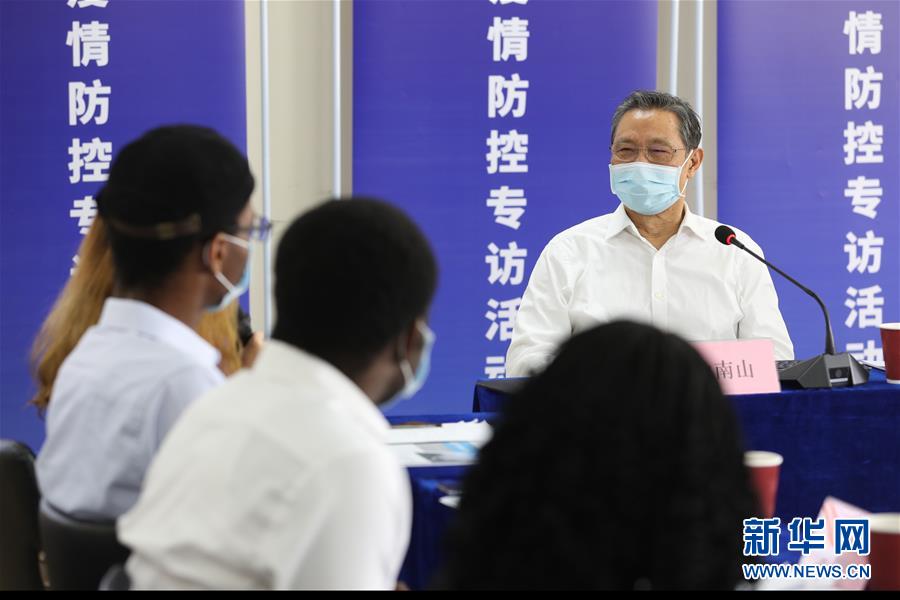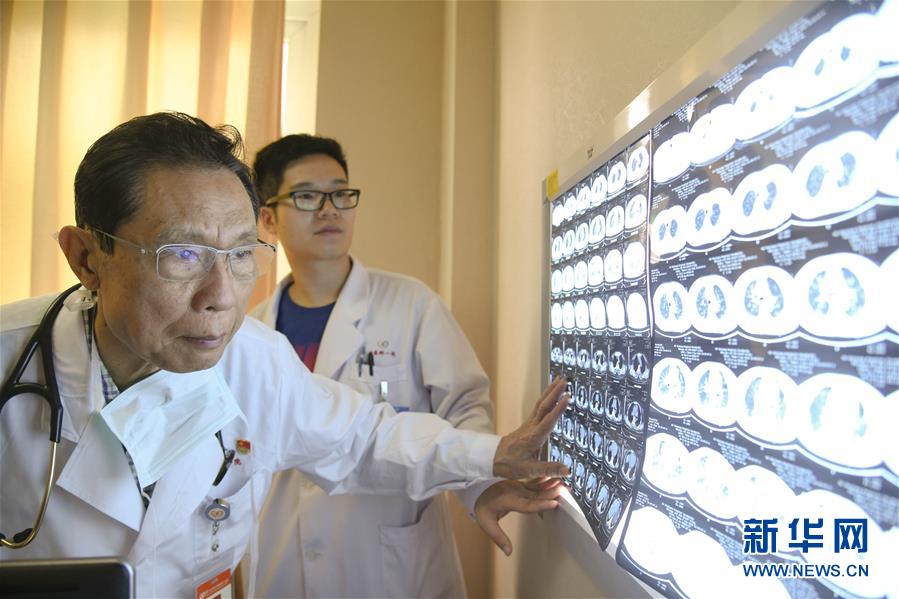Values, Rice Flour and Ecological Chain: Xiaomi’s Market Power Game (Ⅱ)
Core tip:
1. Xiaomi, which has not cooperated with any traditional mobile phone brand, has achieved the fastest growth, and the ecological chain strategy is the main reason, which is a unique solution for Xiaomi to expand the market power boundary.
2. Xiaomi’s ecological chain is an active strategy. It takes capital and values as a link, binds a large number of hardware suppliers and entrepreneurs, achieves scale effect, and enhances user stickiness, which is essentially different from the so-called ecological strategy of promoting "ecologicalization".
3. Xiaomi makes its controllable organizational boundary always coincide with the market boundary through the ecological chain, thus effectively achieving the purpose of eliminating competition, improving penetration and preventing entry, which is a very clever market power strategy.
Case Provision | Case Center of Entrepreneurial Dark Horse College
Author | Nine Records
04
Ecological chain:
The Resource Boundary of Xiaomi Market Power
In fact, among Internet people, Lei Jun is neither the first one to make a mobile phone, nor the last one, nor even the most famous or determined one.
In September 2015, 360 CEO Zhou Hongyi posted a message in a circle of friends, "… … I’ll fuck anyone who stops me from making a mobile phone … …” His remarks were aimed at his partner Coolpad. In December 2014, Qihoo 360 reached a strategic alliance with Coolpad to set up a joint venture company. Coolpad provided smart phone design, research and development, technology, manufacturing, supply chain management, quality control, marketing, after-sales service and other resources, and 360 provided security software, mobile application design and online marketing and promotion resources. But then Coolpad announced the cooperation and shareholding of LeTV, which triggered Zhou Hongyi’s warning.
According to media reports, as early as before the rise of Xiaomi, Zhou Hongyi had talked about cooperation with Huawei with the model of "selling mobile phones at low prices to gain users and Internet advertising distribution to gain benefits", but the cooperation failed. There is also Netease Ding Lei, who found his own shareholder Duan Yongping. As the founder of BBK, Duan Yongping also has a considerable say in vivo and OPPO, and then he didn’t talk it over.
There are several similar examples. In terms of "Internet thinking" and the number of users, Ding Lei and Zhou Hongyi may not be weaker than Lei Jun, but they would rather choose the form of cooperation with mobile phone brand manufacturers, because they know that the traditional ecological model of upstream suppliers and downstream agents is naturally beneficial to enterprises that have been in the industry for a long time. This "market barriers" is hard to break, so it is better to cooperate.
However, today, we can see that Xiaomi, which has not cooperated with any traditional mobile phone brand, is the fastest growing "Internet mobile phone". The difference in strategy is the main reason for the difference in results.Xiaomi adopts a power strategy based on value creation rather than a competitive strategy, which is the ecological chain strategy.
1. Converting capital into resources
To understand Xiaomi’s ecological chain strategy, we must first understand Xiaomi’s position in the market.
Even though a certain power base has been formed in the market through the export of values and fan base, Xiaomi is still at a natural disadvantage in key dependence and trading partnership.
One of the most realistic problems is the competition for upstream resources. Mobile phone hardware industry,There is an extremely complex supply chain system, and each mobile phone company often has hundreds of suppliers.Both start-ups, medium-sized enterprises and large enterprises are facing the challenge of supply chain, and some spare parts even need to be reserved one year in advance. Even with Apple’s power position, every generation of apples may have difficulties in supply in the first two months, and all "hunger marketing" is helpless.
In 2013, Xiaomi once launched a 10400mAh mobile power supply from 69 yuan, but it was out of stock for a long time, and the problem was in the industrial chain. According to media reports at that time, some small and medium-sized brand customers complained that Samsung shelved its plan to supply millet batteries at low prices. Since then, Xiaomi Note2 has also been postponed because it can’t get the most tight AMOLED screen. It is understood that after the decline of Xiaomi’s growth rate in 2015, due to the upstream supply chain manufacturers’ adjustment of the supply plan for Xiaomi to prevent risks, Xiaomi suffered a four-month shortage, indicating that Xiaomi in the supply chain still lacked strong power endorsement.
Another problem lies in the downstream user service link. As an Internet company, Xiaomi’s purpose is not only to sell mobile phones, but to retain users and maintain relationships with users through new retail channels to form long-term services. But if there are no more hardware products besides mobile phones, this business model is not established. Because buying a mobile phone is a very low-frequency behavior, there must be a higher-frequency transaction interaction between Internet companies and their users. In cmnet, software is generally downloaded free of charge, so we must rely on hardware to solve this dilemma.
An obvious problem is that more people are needed to make more kinds of products, but Xiaomi’s pursuit of concentration means keeping the company as small as possible and not doing too many things. If hundreds of hardware products are made, the management pressure and communication pressure are unimaginable.
Like other manufacturers, Xiaomi can also choose to cooperate, but cooperation will lead to the concession of Xiaomi’s product values, with the increase of intermediary agents and circulation links. Many cross-border Internet entrepreneurs have lost their power and lost themselves in cooperation.
Through the establishment of cognitive and relational boundaries, Xiaomi has been invincible in how to sell mobile phones, but it still needs to gather more strength to break the constraints of resources and become the master of the market.
Every entrepreneur has his own unique gift. Lei Jun’s gift is not only his enthusiasm for the Internet, but also his capital operation. He knows what capital wants, and he also has a letter of trust for capital. After 2013 and 2014, with the rise of "Double Innovation", thousands of new intelligent hardware entrepreneurs appeared in China, and they showed Lei Jun a new solution.
As a result, Xiaomi began to use capital to solve the problem. From 2013 to 2014, Xiaomi invested in 25 startups a year.
Xiaomi has two teams to face the cooperation of the ecological circle. One is the ecological circle fund within Xiaomi, which is led by co-founder Liu De. The second is Lei Jun’s Shunwei Fund. In addition, in June 2016, Xiaomi announced that the private bank "Sichuan Hope Bank" jointly sponsored by New Hope Group and other enterprises was officially approved by the China Banking Regulatory Commission. On September 1st, Xiaomi and China UnionPay officially released Xiaomi Pay. In May 2017, it reached a fund cooperation of 12 billion yuan with Changjiang Fund.
Different from the natural ecosystem around big companies, Xiaomi’s ecological chain is a market strategy. The traditional industry ecological chain is that manufacturing enterprises integrate upstream and downstream by means of procurement and distribution. The ecological chain of Xiaomi is to gather a group of startup companies through capital means to realize "group purchase" in the upstream and enrich the products of Xiaomi’s new retail channels in the downstream.
In November 2014, Xiaomi made a round of financing for air purifiers before the air purifier products were listed, with a valuation of 25 million US dollars. If in the traditional supply chain mode, Xiaomi can only get market power equivalent to his actual investment (millions of RMB); However, under the eco-chain model, the power resources obtained by this product are equivalent to those of a company with a valuation of $25 million. In this way, Xiaomi changed the expected capital investment into realistic resources.
This is an original new gameplay that binds products, capital and users together. It is precisely because of this innovation that Xiaomi has used thousands of people to do things that tens of thousands of people can do, and firmly held his own values and did not compromise with the old tradition.
In the animal world, small and weak animals always have to erect their feathers and expand their bodies in the face of a large number of hostile opponents, so as to scare off their opponents. The same is true for start-ups. If they shrink in a corner and are timid, they will definitely become the dish of their opponents.
The ecological chain is another key link in the construction of Xiaomi’s market power. Through the ecological chain, Xiaomi forms alliances with some start-ups by means of capital, and at the same time makes them no longer competitors.
If Apple’s success benefits from a complete ecological chain circled by its own IOS system, then Xiaomi’s ecological chain is an active strategy. It takes capital and values as a link to bind a large number of hardware suppliers and entrepreneurs. On the one hand, it achieves scale effect, on the other hand, it also enhances user stickiness, thus building Xiaomi’s resource-based power boundary.
2. "Xiaomi Ecology" is not "LeTV Ecology"
It is worth noting that Xiaomi’s ecological chain is a market strategy, which is essentially different from the "ecosystem" naturally formed around large enterprises. Xiaomi’s ecological chain is a product of intentional cultivation, not a decentralized network connection, but a core alliance strategy.
The concept of "ecosystem" comes from biology, which was introduced into the field of organizational theory by American sociologists in the 1970s, and formed the school of "organizational ecology". After the rise of the Internet, some scholars put forward the similarity between commercial ecosystem and biological ecosystem, and there are also various relationships among food chain, macro environment and competition. They named such an organizational form that is highly dependent on external cooperation and resource management as "Network Based Organizational Form", which is different from the traditional organizational form that is highly closed or highly dependent on market transactions and has clear boundaries, which is what we now call "ecological model" or ".
Ecology and platform are two concepts that are often confused, although they have many connections. Simply put, the platform strategy is to build a market, while the ecological strategy is to build a city. The core of platform strategy is to link bilateral relations to match transactions, while the core of eco-strategy is to create a closely linked multi-format system by constructing and managing extensive and multi-level cooperative relationships (long-term strategic cooperation agreements, investments, joint ventures, mergers and acquisitions and other non-product transactional relationships).
If Xiaomi only buys products from various startups, or only lets enterprises sell products in Xiaomi channel, Xiaomi is the builder of the platform, but Xiaomi is doing "investment+incubation": enterprises in the ecological chain are independent companies. Xiaomi generally holds 20%-25% shares in eco-chain companies, jointly defining products, leading design, assisting in research and development, and endorsing the supply chain. Therefore, the ecological chain of millet has greater diversity and more complex symbiotic relationship.
In the business ecosystem, energy and nutrients mainly appear in the form of user flow. In the process of Alibaba’s development from a platform to an ecosystem, massive users have always been the core and solid foundation of its construction. Similarly, Tencent announced the implementation of the open strategy to build an ecosystem around WeChat, which obviously comes from hundreds of millions of highly sticky users of WeChat.
In addition, in the organizational ecosystem, the value chain assumes the role of food chain. In nature, the food chain is the core organizational logic, which determines the flow and transformation path of energy and nutrients. In Xiaomi ecological chain, the development and release of hidden value of user groups depends on the construction of value chain in the ecosystem.
Therefore,Xiaomi’s ecological chain is actually an extension of its own power boundary. As the core of the ecological chain, Xiaomi should provide a user base that can support the healthy development of the whole ecosystem and control the key links of the value chain/network, which is by no means possible for every enterprise.
In the domestic A-share market, one company once set off the ecological banner, that is LeTV.
Jia Yueting, chairman of LeTV, said: "Our competition with peers can no longer be measured by the gains and losses of a certain stage or point, but more depends on the connection and integration of all links in the ecological chain and the cross-border innovation and continuous subversion on this basis." An open letter to employees.
As a result, LeTV put forward an "eco-anti-"business model, established an all-encompassing ecosystem from sports programs to online car rides, and believed that mutual diversion among eco-enterprises would have great commercial value. For example, from the very beginning, Jia Yueting’s positioning of LeTV’s mobile phone was to attract users with video and become the entrance of LeTV’s ecological terminal, so LeTV’s mobile phone has been sold below the cost price. (April 2015, China Entrepreneur Magazine, "Don Quixote • Jia: The Lonely Journey of the Subverter.
Letv’s typical imagination of "ecological opposition" is: in the stadium scene, there is a moment when people have the strongest desire to buy — — When you see Messi kick the ball into the goal, then you will think, I’ll buy a pair of shoes like this!
Later we learned that it was a dream.
The out-of-control LeTV Ecology can only make a fuss about related party transactions, deferred income tax and equity distribution of subsidiaries, and hide losses.
However, LeTV’s failed attempt does not mean that the development prospect of Xiaomi Ecology is gloomy. Xiaomi’s ecological logic is much simpler and more effective: Xiaomi does not expect related transactions between eco-chain enterprises to bring income (LeTV’s case proves that this income is unreliable), but uses the eco-chain to improve the overall market efficiency.
Moreover, there is always a core in Xiaomi’s ecological chain — — Xiaomi mobile phone and Xiaomi brand values, which provide fast-growing resources and channels for other start-ups. Unlike the "loss-making" sales of LeTV’s mobile phone, Xiaomi’s mobile phone has always been making money, although it claims low gross profit margin.
In the early days of the rapid growth of Xiaomi’s mobile phone, some suppliers complained that Xiaomi’s "Internet thinking" was good, but it was predatory, which depressed the profit margin of supply chain enterprises. However, using the eco-chain strategy, as of the first quarter of 2018, Xiaomi has brought more than 210 eco-chain enterprises into its own track, further enhancing its power position in market negotiations, and also allowing suppliers who cooperate with Xiaomi to have more orders.
It can be said that Xiaomi effectively uses his power to eliminate the dissatisfaction of suppliers, and at the same time, it is further transmitting Xiaomi’s values — — There will be a large number of users coming with the price reduction, which is the reappearance of Xiaomi’s cognition of market power in the industrial chain relationship.
In December 2015, Lei Jun proposed that the ecological chain should be an independent brand. Three months later, "Mijia" was released.To some extent, Xiaomi’s "Mijia" ecological chain system can be regarded as the intelligent hardware version of the App Store.The App Store launched by Apple in 2008 is a successful example of a single enterprise establishing an ecosystem, which determines the acquisition form of applications and services in the era of mobile Internet.If the smart hardware in the future is also the first choice to enter the track of "Mijia", the growth space of Xiaomi will be limitless.
3. Under the rule of Xiaomi
For an ecosystem, win-win is the premise of growth. An ecological chain that can continuously share benefits for all participants is fundamentally sustainable.
Then, can everyone achieve a win-win situation in the Xiaomi ecological chain?
The answer is yes.
First of all, the ecological chain has changed the relationship between Xiaomi and other startups and reduced the future risks of Xiaomi.
In the early days, Xiaomi’s market power cognitive boundary of "high quality, high value and high cost performance" not only affected the big manufacturers it aimed at, but also affected the future of many entrepreneurial projects.
In 2014, at the peak of domestic intelligent hardware entrepreneurship, entrepreneurs, investors and entrepreneurs often asked the same question, "If Xiaomi made your product, how would you respond?"
This antagonism leads to many situations of "cottage" millet. In a dialogue with senior government officials in 2015, Lei Jun also specifically mentioned the proliferation of counterfeit goods. Because of Xiaomi’s strong influence in the hearts of consumers, some startups in the south began to make Xiaomi’s mobile phones and accessories, which caused many problems. Xiaomi once asked the government to increase anti-counterfeiting efforts.
However, with the development of Xiaomi’s ecological chain, these voices have gradually weakened. If you can get Xiaomi’s investment and guidance, why bother to "cottage" it?
This reflects the power of Xiaomi ecological chain.
The future enemies of a company include not only those visible competitors, but also those startups that don’t know where they are. It is impossible to solve the problem simply by relying on competitive strategy. Xiaomi makes its controllable organizational boundary always coincide with the market boundary through the ecological chain, thus effectively achieving the purpose of eliminating competition, improving penetration and preventing entry, which is a very clever market power strategy.
Secondly, the ecological chain has effectively cultivated Xiaomi’s allies in values.
Liu De, the co-founder of Xiaomi in charge of the ecological chain, is a designer and once worked in the Whampoa Military Academy of China Industrial Designers — — University of Science and Technology Beijing is the head of the Department of Industrial Design, and he leads the team in charge of the design of Xiaomi mobile phone.
Liu De divides Xiaomi’s ecological chain into three layers: the innermost layer is the basic hardware such as mobile phone and TV, which is closed and Xiaomi can only do it himself; The second layer is the product directly related to it — — Headphones, charging treasures, bracelets, and IOT devices such as rice cookers, electric kettles, and smart desk lamps are semi-open; The outermost layer is household consumables, such as rice related to rice cookers, filter elements related to purifiers, etc. Xiaomi does not do it himself. The products of the first two floors are also part of Xiaomi’s new retail channel, which can sell the products of the third floor. For example, you can place an order to buy filter elements on the APP page of Xiaomi air purifier.
Xiaomi requires every product to be explosive, and Liu De’s team will personally participate in the design of eco-chain products, and use Xiaomi’s rapid penetration of the market to help these products quickly occupy the market.
In addition to the support of capital and supply chain, Xiaomi will also pass on some explosive methodologies, such as how to simplify the design of a product, reduce costs and meet 80% of the needs of 80% users. When mi band was launched that year, Xiaomi asked the manufacturer Huami Technology to focus on two things — — Reduce power consumption, increase viscosity and improve design. When smart wearable devices cost thousands of dollars in foreign countries, Huami Technology launched the first generation mi band in 79 yuan, which quickly became popular.
The well-known self-media curiosity daily has analyzed the reasons for the success of Huami Technology. They found that in terms of sales expense ratio, relying on Xiaomi’s channel and word-of-mouth marketing, the sales expense of Huami accounted for less than 2% of revenue for a long time, while its peer benchmarking manufacturer Fitbit was nearly 25%. With the help of Xiaomi ecological chain, its procurement cost is also nearly 50% lower than Fitbit.
In order to support the cost of sales, Fitbit’s gross profit margin has been maintained at around 40%. However, the gross profit margin of Huami was only 12.3% and the net profit margin was -4.2% when it produced the first generation of mi band, so it was able to create explosions and cultivate users at a very low price. After the launch of Xiaomi’s second-generation bracelet in mid-2016, the price was raised from 79 yuan to 149 yuan, and the net profit rate of Huami Technology became positive. Therefore, in just three years, the strength of Huami, after being a large-scale brand, has undergone a major reversal compared with Fitbit: the net interest rate of Huami has risen to 8.15%; After 2015, Fitbit’s revenue continued to decline and it fell into a loss.
Of course, there are also some eco-chain enterprises that don’t like to survive in this system. Because the Xiaomi ecological chain emphasizes cost performance, both Lei Jun and others in the company like to say, "The biggest disadvantage of this product is that it is too cheap!" It is difficult for these enterprises to obtain higher gross profit within the Xiaomi ecological chain.
In this respect, Xiaomi is also different from Wal-Mart. The ecological chain is an open platform, which only participates in the incubation of start-ups from 0 to 1, and the later development is not limited. Entrepreneurs can make their own brands outside the ecological chain, and it doesn’t matter if they don’t even accept Xiaomi’s investment. Xiaomi is not so much a channel provider as a product gathering place with common values.
With the help of ecological chain, Xiaomi has effectively constructed the resource boundary of its own market power, so its market position is more stable.
05
Replay
The previous article is magnificently about 20,000 words, but it is actually just studying a problem:What is the reason why Xiaomi can succeed in the market?
Around this problem, we have two findings:
First of all, we find that power strategy, not competition strategy, is leading the growth of Xiaomi.
As mentioned above, the growth of Xiaomi is a textbook case of market expansion. As a start-up, they have established a set of.Market power system in the name of "Xiaomi mode": establish the brand identity in the era of mobile internet with cost performance and explosion rate, and use this to push back the improvement of organizational efficiency and establish the cognitive boundary of power; Turn customers into "fans" and let them participate in the design and promotion of products, so as to form the relationship boundary of enterprise market power; Build an ecological chain by means of venture capital, share the risk of market demand with small hardware startups, accelerate their growth and expand the resource boundary of enterprise market power.
It is this innovative system that distinguishes Xiaomi from many mobile phone manufacturers, builds and cultivates its own exclusive market, and grows step by step in the environment surrounded by wolves, dancing with the wind and soaring to the top.
From the beginning to the end, Xiaomi’s market decision is to occupy the market "mainly with me". We have not found that Xiaomi has taken the initiative to make competitive efforts to find the gap of opponents or build barriers to prevent opponents from attacking. But because of this, they always hold the initiative of the market.
In the dark horse college of entrepreneurship, according to the mental model, entrepreneurs are divided into two categories: heaven school and earth school. Xiaomi can be said to be a typical Tianpai company. Huawei and ZTE have been communication enterprises for 20 years, and Lenovo, OPPO, vivo and other companies also have rich experience in manufacturing and selling consumer electronic products, all of which are naturally grown in this industry. But Xiaomi is not, Xiaomi is a real heterogeneous — — It is more like the spokesperson of the future Internet product model in today’s social ecology — — If you believe Lei Jun’s prediction.
Generally speaking, Tianpai startups succeed in the market, or they seize the opportunity of social change and create a new industry, such as Ali; Either have some independent innovative technologies and find ways to realize them, such as Baidu. Because it is difficult to break through the bottleneck of resources and relationships, Tianpai startups are generally afraid of fighting with incumbent enterprises in the traditional business environment. But Xiaomi is different. It brings the idea of Tianpai entrepreneurs to the world of local giants and proves itself in the market struggle.
Xiaomi’s method of winning the struggle, specifically, Xiaomi’s method of building its own power in the market through values, rice flour and ecological chain, is more practical for today’s entrepreneurs. Because the opportunities of using innovative tools to change the world in the initial stage of the Internet have become less and less, entrepreneurs are now facing more situations, how to take root in an industry and do their best to create a new and successful company. Xiaomi is an example in this respect.
Secondly, we believe that Xiaomi’s achievements also challenge the traditional company value evaluation system.
In 1970, Milton Friedman, an economist, published a famous article in The new york Times Magazine: Corporate social responsibility is to improve profits. This creed, together with the hypothesis of "rational man" in economics, supports the continuous improvement of corporate profits and the legalization of personal income of shareholders and executives.
However, Drucker, a master of management, does not agree with this view. In his view, profit is the result and should not be the purpose of management. It is the reward given to the owner by the enterprise for its continuous operation, but the purpose of the enterprise must exist in the society.
Xiaomi is such a Drucker-style enterprise instead of Friedman-style enterprise. It is a dream enterprise, not a profit machine, but a startup company that wants to create value for society.
In Xiaomi’s business model, user reputation is the origin, cost performance is the engine, and social media is the accelerator. Everything Xiaomi does is to provide products that are "touching and affordable", and he believes that actively reducing the gross profit margin of hardware will eventually bring the desired business value.
According to traditional business ethics, all enterprises will try their best to avoid the situation of zero gross profit, because that means that your company has no barriers in the market.
But Xiaomi did the opposite. It took the initiative to reduce the gross profit, which was consistent with the words of Amazon founder Bezos:"A large company with low gross profit that can survive is itself the biggest moat."However, it is a big challenge to traditional business values.
Why should an enterprise exist? This involves the fundamental definition of enterprise and even entrepreneur value. The expectations of shareholders are different from the interests of enterprises, and the goal of investors is only to make money.
Interestingly, when Xiaomi went public, most media in China, even a large number of self-media, always unconsciously worried about investors.Look at the value of millet simply from the perspective of making money.People ask Lei Jun again and again, where is the moat, where is the revenue growth point and where is the profit? butFew people study the value of millet from the perspective of society and market. However, few people in the media are real investors in Xiaomi.
In our opinion, the value of Xiaomi lies in the value it creates for users. Xiaomi can become Xiaomi because it is a real market revolutionary and a great entrepreneurial experiment that is still going on.
Moreover, the traditional evaluation system can not reflect the possible changes in the future and the value of entrepreneurs’ personal factors to the company.
On the road to Xiaomi’s success, there are huge contingency factors: if Xiaomi didn’t just catch up with the tide of "double innovation" and loose capital environment in the first four years and rush to the "stratosphere" with the fastest speed, would it be able to survive the twists and turns in 2015-2016? If Lei Jun hadn’t happened to be the president and angel investor of Jinshan, could Xiaomi have won the unthinking support of so many netizens and business partners at first, thus enjoying loyalty and reputation? These questions are hard to answer.
But if we look at it from another angle, it is precisely because the founder of Xiaomi is Lei Jun that it can have these accidental opportunities. Lei Jun’s upward motivation, adherence to Xiaomi’s values, familiarity with the method of "lean entrepreneurship" and his resources, contacts and personality are the necessary conditions for all future opportunities of Xiaomi.
In fact, it is precisely the combination of the founder’s personal characteristics and the entrepreneurial methodology based on uncertainty that makes the startup explode with great energy. Wu Xiaobo, a media person who spent $200,000 to buy Xiaomi shares, said, "Lei Jun himself is the biggest premium of Xiaomi".
For an ongoing change, people always overestimate the change it will cause in the next year, but underestimate its long-term impact.
Looking back now, as Lei Jun said in an open letter on the eve of listing: "In the past eight years, the cottage in China has been completely eliminated; China’s smart phones and smart hardware are getting better and better in quality and cheaper in price, and they are rising strongly in the world … … Xiaomi has also become the fourth largest smartphone manufacturer in the world, changing more than 100 industries through eco-chain products. "
Isn’t it an extraordinary market achievement for a startup company to grow from zero to the fourth place in the world in eight years in a long-standing mainstream battlefield?
It should be noted that this paper only studies Xiaomi as a startup company. When a company gets bigger and bigger, especially after listing, it is likely that some decisions that helped it succeed will no longer apply. According to the case center of Entrepreneurship Dark Horse College, in the future market, Xiaomi still faces at least four main risks:
1) Risk of explosives.Xiaomi’s low gross profit strategy determines that each of their products must be explosive, and the cost should be diluted by explosive products, otherwise it will lose money. Take Xiaomi air purifier as an example, the mold opening cost is 10 million. If only 10,000 units are sold, the cost of each unit will increase by 1,000 yuan. Only after the sales volume can reach millions of units can this cost be reduced to a negligible level. This requires that every product of Xiaomi must be based on the needs of a large number of users, and a large number of people will buy it. However, the preferences of modern users can easily migrate with the head IP, and the demand for diversification is also increasing. The emergence of explosions is very accidental. Once a heavyweight product fails to become an explosive product, Xiaomi may fall into huge financial risks.
2) Fan risk.Xiaomi should become both a popular company and a fan culture company. The contradiction here is, is the growth of fans sustainable? Every company can maintain a limited number of fans. If the number of fans stops growing, the growth space of Xiaomi’s subsequent Internet services and intelligent hardware products will be greatly tested, and Xiaomi will lose its difference from other mobile phone manufacturers. No matter from the perspective of future development or current market, Xiaomi needs new means to interact with users and complete new traffic conversion.
3) Main channel risk.Xiaomi’s ecological chain is a big stove, and Xiaomi’s own brand is a heat source. With waste heat, the surrounding intelligent hardware can be made. But the outside world defines an enterprise, or more from its main channel. Especially in the capital market, I prefer "Friedman-style" enterprises, and it is difficult to understand the ecological practices of startups. Letv’s case is not to be discussed. Since 2014, Haier has launched a "micro-model" to build an entrepreneurial ecosystem and achieved good results. From the beginning of 2014 to the present, Haier’s revenue has doubled, its profit has increased by 70%, and its share price has doubled. However, in the same period, Gree focused on its main business, its revenue didn’t change much, its profit doubled, but its stock price quadrupled. Therefore, no matter how great achievements Xiaomi’s ecological chain has made, the valuation of Xiaomi may be defined more according to its position in the main channel in the capital market.
4) Technical risks.Every startup company will enter the "new normal" of slow growth sooner or later after experiencing a high-speed growth period. At that time, companies without the accumulation of key core technologies cannot have stable market power. The next development of Xiaomi needs to get more source innovations from the outside to the inside, including hard technology.
For a startup, all success is temporary. The greater the achievements in the past, the greater the challenges in the future.
Today, the development of Xiaomi has changed from the company that wanted to "follow the trend" and take a ride on the mobile Internet to the standard-bearer who promoted the concept of "touching people’s hearts and being kind in price". But as of 2017, Xiaomi’s share in the global mobile phone market is still only 6.4%. This shows that changing people’s inherent cognition is the most difficult thing in the world. Even if you are sincerely starting from users, you will not let all users become your fans. This is also the fate of most reformers in history — — There were countless people who wanted to change the world, and eventually they became a supplement to the diversity of the original world.
Today, the mobile Internet has become much more complicated than what Xiaomi imagined when he was born. In the early days of Internet application, companies that master Internet tools in advance may be able to dig the "first bucket of gold" more easily, but in the future, all companies will be Internet companies.
As time goes by, everything that God has given a person will be gradually taken back, talent and identity will lose their aura, fans will get old, fashion trends will change, and all that can be left is what they have fought for at the moment.
Lei Jun said: Kind people will not be too bad luck. We wish Lei Jun good luck! Xiaomi, good luck!
[References]】
[1] Professor Catherine &bull of Stanford University; M• Eisenhardt, Market Construction and Boundary Shaping: Entrepreneurial Power in the nascent market (translated by Yu Ming, Guanghua, Peking University).
[2] Xu Xiaoping, a teacher of Zhenge Fund, talked about Entrepreneurship several times.
[3] Luo Xiaoqu, Ph.D. of Stanford University and former chief strategy officer of the dark horse of entrepreneurship, has made relevant research results on "entrepreneurship ecology".
[4] Notes of Xiaomi, Li Wanqiang, Hong Feng, Gao Ziguang and other partners and executives in the dark horse college of entrepreneurship.
[5] Xiaomi’s internal marketing manual "Sense of Participation" and experience collection "Notes on Xiaomi’s Ecological Chain Battlefield".
[6] Caitlin • Muff, Thomas • Dilik et al., Management Education for the Benefit of the World.
[7] Zhou Hang, Shunwei Capital; Feng Weidong, Tiantu Capital; Dai Saiying, founder of three dads; Liu Jianhong, Peng Gang, former senior executives of LeTV; etc. in the dark horse college of entrepreneurship.
[8] Major media reported publicly.
[For more reading, see Article 12.】
Values, Rice Flour and Ecological Chain: Xiaomi’s Market Power Game (I)
Values, Rice Flour and Ecological Chain: Xiaomi’s Market Power Game (Ⅱ)


